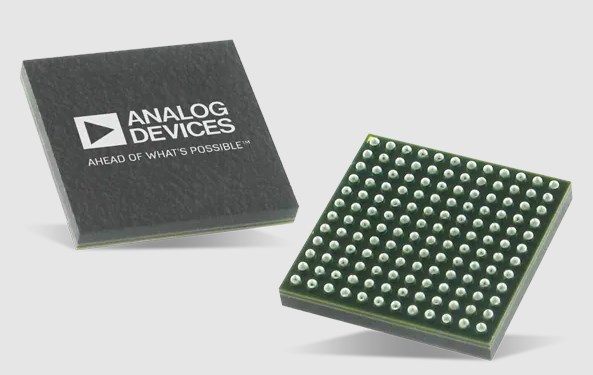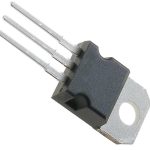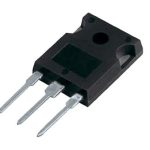The field of wireless communication continues to evolve at a rapid pace, demanding advanced technologies that can adapt to changing requirements. One such technology is the AD9361 RF agile transceiver, developed by Analog Devices. With its exceptional performance, flexibility, and feature-rich design, the AD9361 has become a go-to solution for a wide range of applications. In this comprehensive blog, we will introduce AD9361in detail. Come on and read right now!
What is AD9364?
AD9364 is an integrated RF transceiver chip developed by Analog Devices. It is part of the AD936x family, which is designed for software-defined radio (SDR) applications and wireless communication systems. The AD9364 offers a cost-optimized solution while providing essential features for broadband communication.
Features
- Wide frequency range: The AD9364 supports a frequency range from 70 MHz to 6 GHz, allowing it to cover various licensed and unlicensed bands.
- Programmable filter options: It provides configurable filtering options, enabling users to optimize performance based on specific application requirements.
- Dual-channel transceiver: The AD9364 offers both dual receivers and dual transmitters, facilitating simultaneous reception and transmission of signals.
- Digital step attenuator: It incorporates an on-chip digital step attenuator that helps in adjusting signal levels, reducing unwanted interference and improving dynamic range.
- Low power consumption: The AD9364 is designed to operate with low power consumption, making it suitable for battery-powered devices and energy-efficient applications.
- Flexible data rates: It supports sample rates from 200 ksps to 56 MSPS, allowing for flexible data transmission and reception.
Practical Applications
The AD9364 finds practical applications in various wireless communication systems, including:
- Software-defined radios (SDRs): Due to its versatility and wide frequency coverage, the AD9364 is used in SDR platforms to enable flexible and reconfigurable wireless communication.
- Broadband communication systems: With its cost-effective design and essential features, the AD9364 is utilized in broadband wireless communication systems such as Wi-Fi routers, wireless access points, and cellular base stations.
- Internet of Things (IoT): The AD9364’s low power consumption and wide frequency range make it suitable for IoT devices, enabling wireless connectivity in smart homes, industrial automation, and environmental monitoring systems.
Price

AD9361 SDR Signal Path

Compare AD9361 With Other Models
AD9361 vs AD9363
The AD9363 is another member of the AD936x family, which shares many similarities with the AD9361. Both chips are designed for software-defined radio (SDR) applications and offer a wide range of frequency coverage, filtering options, and programmable signal chains.
However, there are a few key differences. The AD9361 provides two receivers and two transmitters, while the AD9363 offers only one of each. Additionally, the AD9361 has better phase noise performance and supports a higher sample rate, making it a preferred choice for more demanding applications.
AD9361 vs AD9364
The AD9364 is also part of the AD936x family and shares similar characteristics with the AD9361. It is primarily used in broadband wireless communication systems and SDR applications. One major distinction is that the AD9361 has more configurable filter options and a wider frequency range, enabling it to cover a broader spectrum.
On the other hand, the AD9364 is a cost-optimized variant that provides a lower-cost alternative for applications where extensive configurability and wide frequency coverage are not essential.
AD9361 vs AD9371
The AD9371, compared to the AD9361, is a highly-integrated wideband RF transceiver. It incorporates several additional features such as an on-chip synthesizer, digital step attenuator, and observation receiver. This makes it suitable for various applications, including 3G/4G/5G base stations, aerospace and defense systems, and industrial radios.
While both devices offer similar frequency range coverage, the AD9371 surpasses the AD9361 in terms of its ability to handle wider channel bandwidths and deploy advanced signal processing algorithms.
AD9361 vs ADRV9002
The ADRV9002 is another RF transceiver offered by Analog Devices. Compared to the AD9361, it is designed for narrower bandwidth applications but with enhanced performance in terms of noise figure and linearity. The ADRV9002 supports up to two transmit and two receive channels, similar to the AD9361.
However, it adopts a different architecture that focuses on delivering superior performance for single-antenna systems, making it suitable for applications such as wireless communication base stations and industrial IoT.
AD9364 Manual: How To Use And Maintain It?
How to Use
1. Familiarize yourself with the datasheet and user manual
Before using AD9364, it is essential to thoroughly read and understand the datasheet and user manual provided by Analog Devices. These documents contain crucial information on pin configurations, electrical characteristics, programming interfaces, and register settings.
2. Power supply considerations
Ensure that the power supply to AD9364 meets the specified voltage and current requirements. Follow the recommended power supply sequencing and decoupling guidelines to ensure stable and clean power delivery.
3. Board layout
Proper board layout is vital for optimal performance. Follow the layout guidelines provided in the datasheet to minimize noise, crosstalk, and signal integrity issues. Pay attention to RF traces, ground planes, and component placement to minimize interference.
4. Configuring AD9364
Use the programming interface specified in the datasheet to configure the AD9364 according to your desired parameters, such as frequency range, bandwidth, gain, and filtering options. Ensure that you properly set up the control signals, SPI interface, and other necessary connections between the AD9364 and the microcontroller or FPGA.
5. Software integration
Integrate AD9364 into your software-defined radio (SDR) platform or wireless communication system. Utilize the provided software drivers, APIs, or reference designs to control and communicate with the AD9364. Implement the necessary signal processing algorithms and protocols required for your specific application.
How to Maintain
- Thermal management
Adequate thermal management is essential to ensure the longevity and reliable operation of AD9364. Follow the thermal guidelines provided in the datasheet to design an effective cooling solution, such as heat sinks or fans, to prevent overheating.
- ESD precautions
Implement proper electrostatic discharge (ESD) precautions when handling AD9364. Use ESD-safe equipment, including wrist straps and grounded workstations, to avoid damaging the chip during assembly, testing, and maintenance.
- Firmware and software updates
Stay updated with the latest firmware and software releases provided by Analog Devices. Regularly check for bug fixes, performance improvements, and new features that may enhance the functionality and stability of AD9364. Follow the recommended update procedures provided by Analog Devices when applying firmware or software updates.
- Environmental considerations
Protect AD9364 from harsh environmental conditions, such as excessive humidity, dust, or temperature extremes. Consider using conformal coatings or enclosures to shield the chip from these external factors.
FAQs
What is the sample rate of AD9361?
The AD9361 offers a flexible programmable sample rate ranging from 200 ksps (kilo-samples per second) to 61.44 MSPS (mega-samples per second). This wide range allows users to adapt and optimize the radio’s performance based on their specific application requirements.
What is the maximum sample rate for AD9361?
The AD9361 supports a maximum sample rate of 61.44 MSPS (mega-samples per second). This high sample rate capability is particularly beneficial in applications that demand wide bandwidths and high data throughput, including advanced wireless communication systems and radar applications.
What frequency bands are AD9361?
The AD9361 is capable of covering a broad range of frequency bands. It supports both licensed and unlicensed frequency bands from 70 MHz to 6 GHz. This wide frequency coverage enables its utilization in various wireless communication standards, such as GSM, WCDMA, LTE, and Wi-Fi.
Conclusion
With its wide frequency range, flexible configuration options, and reliable performance, the AD9361 is poised to shape the future of wireless communication. Whether in software-defined radios, broadband communication systems, or IoT devices, the AD9361 empowers engineers and innovators to create cutting-edge solutions that meet the evolving demands of connectivity.




